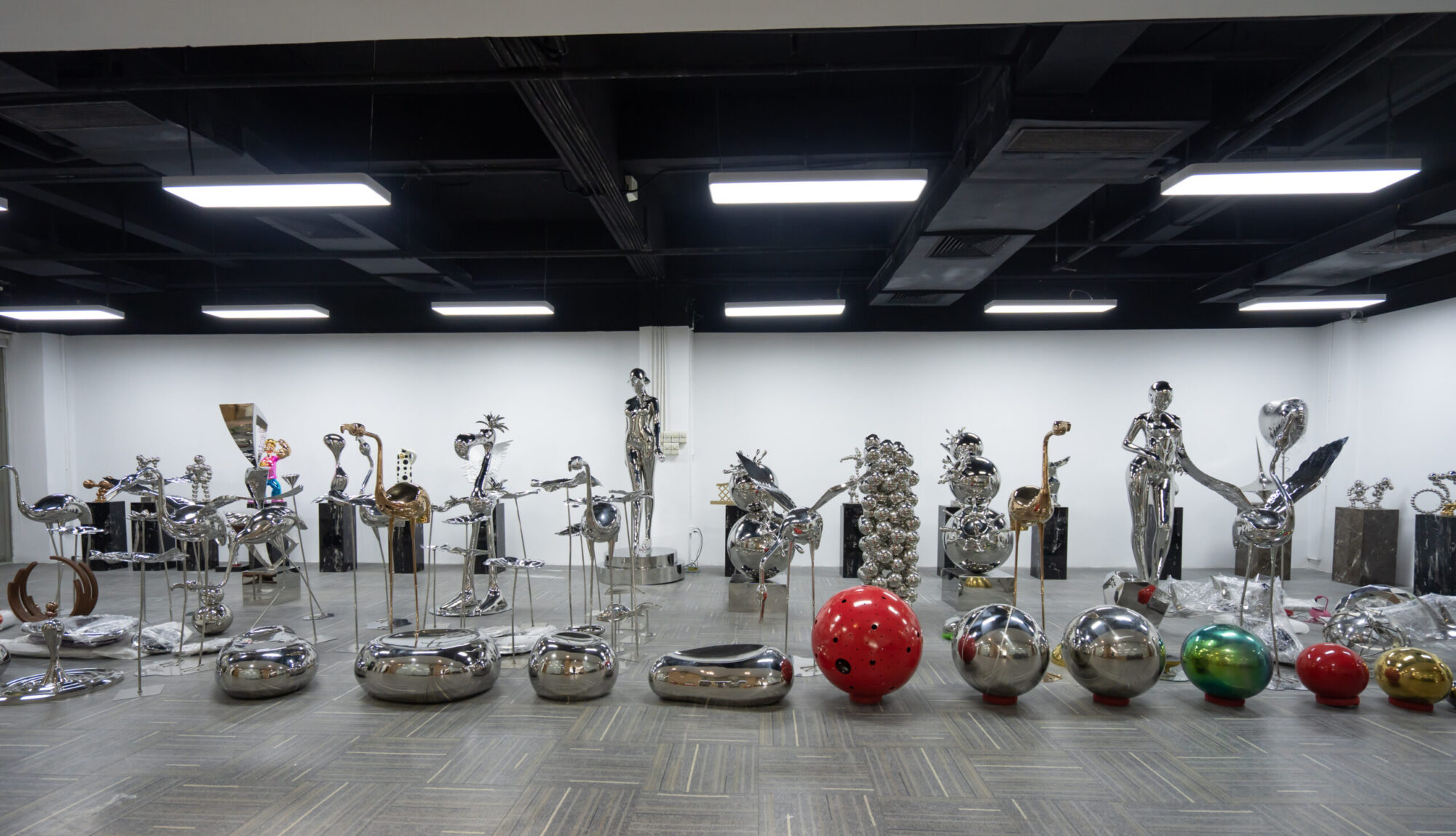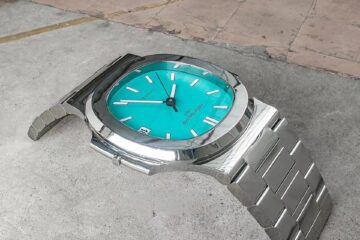Introduction to Stainless Steel Sculpture Art

- History and Origin
1.1 Discovery and application of stainless steel
Stainless steel is a corrosion-resistant alloy alloyed with iron, chromium, nickel and other elements that provides excellent corrosion resistance and mechanical properties. Its discovery dates back to the early 20th century, and due to its unique properties, stainless steel is widely used in industry and construction. Later, the artist began to introduce stainless steel into sculpture creation.
1.2 The bud of stainless steel sculptures
In the mid-20th century, with the rise of modernist art trends, the field of sculpture began to focus on innovation in materials and forms. Artists began experimenting with new materials, with stainless steel attracting great interest from sculptors because of its modernity, weather resistance and malleability. This marks the germination of stainless steel sculpture as an independent art form.
- Development and Evolution
2.1 Technological progress
With the continuous advancement of metal processing technology, the production skills of stainless steel sculptures have also been greatly improved. The development of CNC cutting, laser cutting, and welding technology allows artists to shape stainless steel more accurately and create more complex and delicate works.
2.2 Diversity of styles
The development of stainless steel sculptures has gradually formed a variety of styles, including abstraction, realism, surrealism, etc. Through their unique treatment of form, structure and space, different artists have demonstrated their own unique stainless steel sculpture styles, injecting new vitality into this art form.
- Artists of different styles
3.1 Niki de Saint-Fair
Niki de Saint-Fair is one of the founders of stainless steel sculpture. He mainly uses abstract lines and curves, and through the clever use of metal, he creates a series of stainless steel sculptures with a sense of flow and space. His works emphasize the control of space in form and have become a model of modern stainless steel sculpture.
3.2 John Dewar
John Dewar is one of the pioneers of modern stainless steel sculpture, and his works often incorporate technological, natural and humanistic themes. Through the expanded use of stainless steel, he created a series of sculptures that reflected social phenomena and human destiny, which were deeply loved by the audience.
3.3 Alexander Karaveyev
Alexander Karaveyev is a stainless steel sculpture artist known for his unique abstract style. By carving and polishing the metal surface, he creates impressive light and shadow effects, giving stainless steel sculptures a highly expressive artistic language.
- Looking to the future
4.1 Technology and Innovation
In the future, with the continuous advancement of science and technology, stainless steel sculptures will usher in more innovative possibilities. The application of 3D printing technology, intelligent sensing technology, etc. will make stainless steel sculptures have greater breakthroughs in form, function and interactivity.
4.2 Environment and Sustainability
As people pay more and more attention to sustainable development, future stainless steel sculpture production will also pay more attention to environmental protection. Exploring the use of recyclable materials and the integration of sculptures with the natural environment will become one of the trends in the development of stainless steel sculptures in the future.
Summarize:
As a unique art form, stainless steel sculpture has experienced a process from origin to development. It not only continues to innovate in technology, but also presents a diverse look in style. Artists of different styles make this art form richer and more interesting through their unique interpretations of stainless steel. Looking to the future, stainless steel sculptures will continue to develop driven by technology and the environment, bringing more surprises and revelations to the art world.




0 条评论